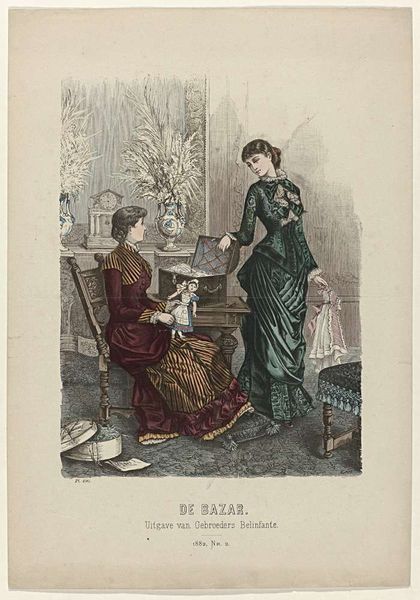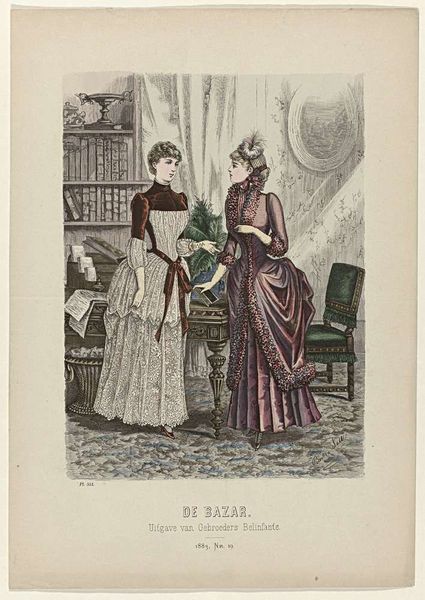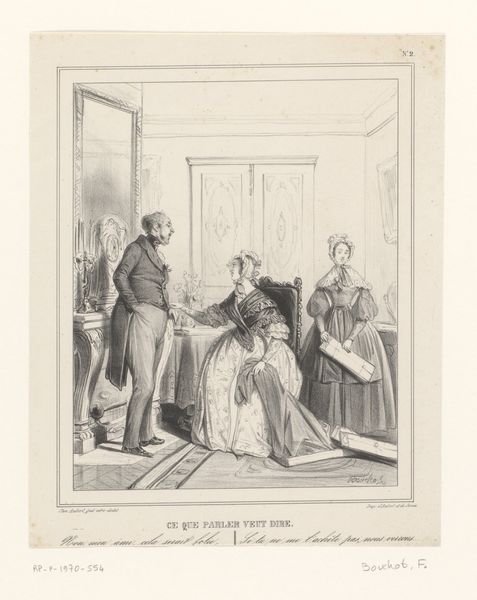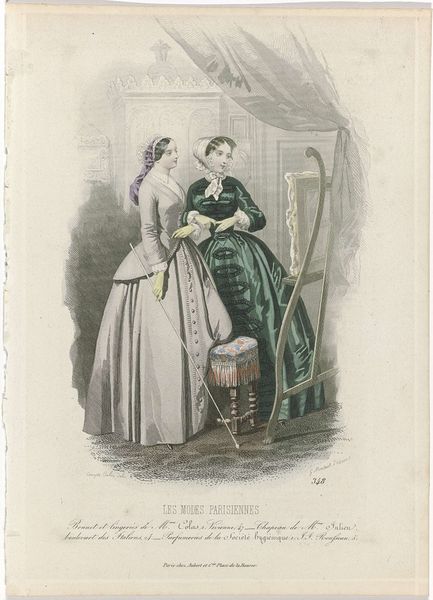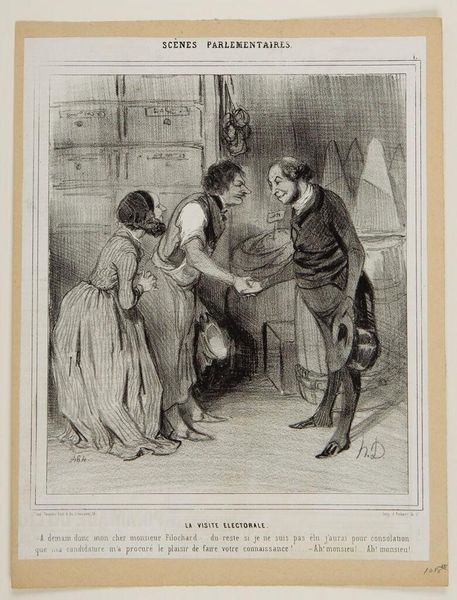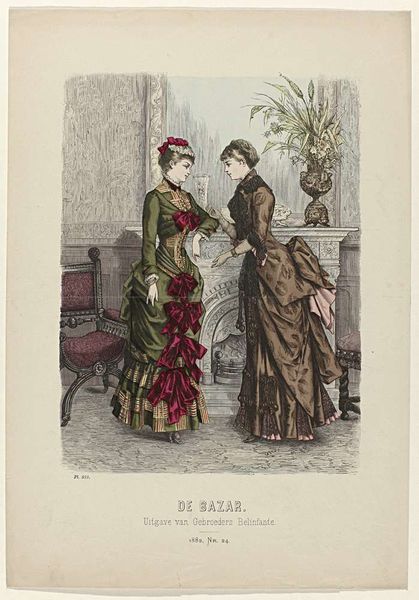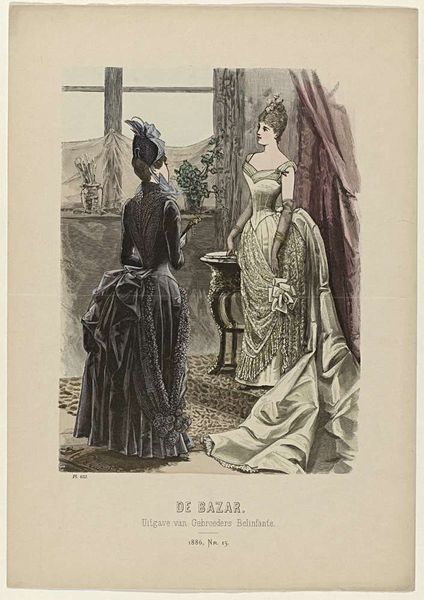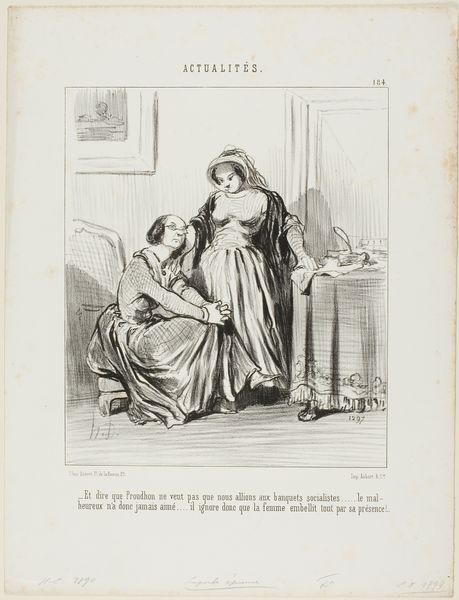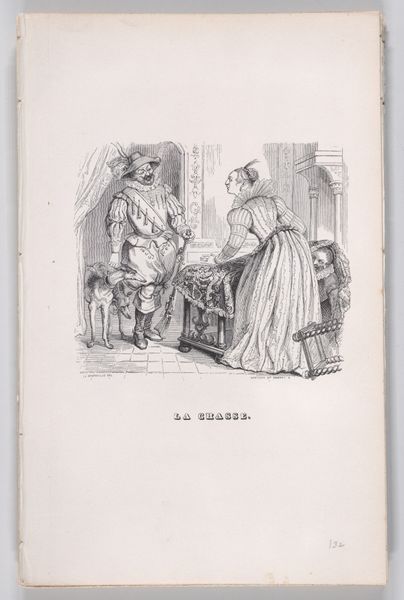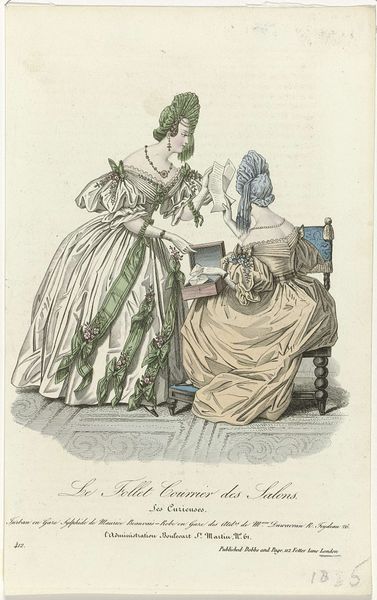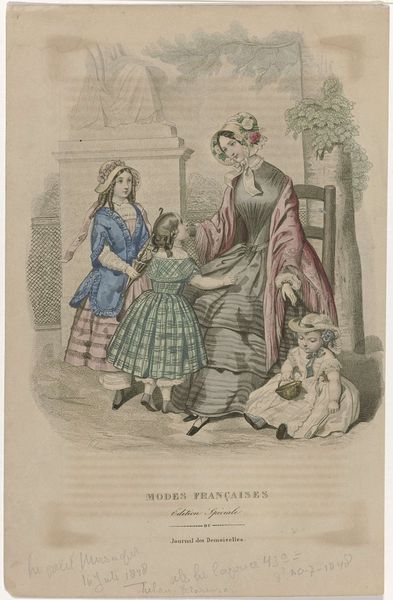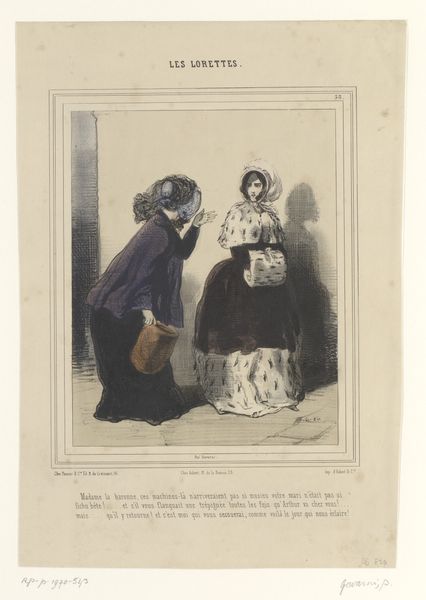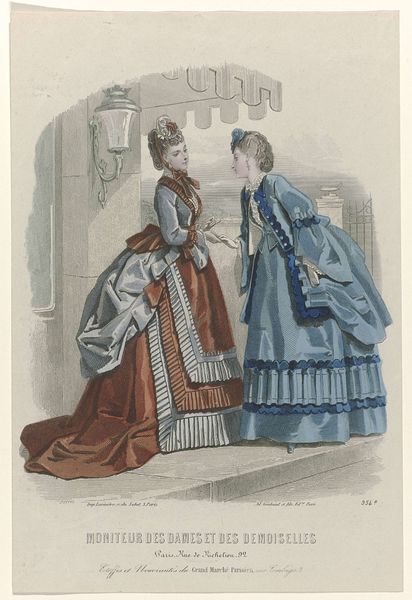
graphic-art, print
#
portrait
#
graphic-art
# print
#
genre-painting
#
dress
Dimensions: height 382 mm, width 270 mm
Copyright: Rijks Museum: Open Domain
Curator: The graphic print titled "De Bazar, 1883, Nr. 21, Pl. 554" comes to us from 1883 and seems to capture a domestic scene. What is your first impression, Editor? Editor: Oh, it's like stepping into a memory. Melancholy, a touch of drama. The deep reds and blues feel rich, yet there’s an underlying sadness hanging in the air. Reminds me of being a kid, wanting something just out of reach. Curator: It’s interesting that you sensed sadness. This piece engages with the 19th-century phenomenon of the department store and its impact on women's roles—particularly consumerism and class distinctions. We might even examine how power dynamics play out in that specific interaction between these women. Editor: Power dynamics... maybe. But look at the seated woman comforting the child. Isn't there an intimacy there? The other figure seems to stand guard, removed. It evokes a tension, perhaps of what it meant to perform certain versions of womanhood at that time. It seems to transcend just pure capitalist exchange, if you see what I mean. Curator: I see it—but consider that the availability of ready-made clothing—and the desire it sparked—changed labor patterns for women. This scene in “De Bazar” could be viewed through the lens of women's participation in both production and consumption and their dependence on the social rituals surrounding marketplaces. Editor: Maybe so! All that shopping… but I see feelings. The lines, almost etching-like, have an immediate quality. And then, just above "De Bazar" is says: "Uitgave van Gebroeders Belinfante"... So there's a brand attached to those performances we spoke of. Do you know how this "bazar" changed lives for the artist or maker? Or the publishing house? Curator: That's difficult to trace specifically. These genre paintings provided a rich site for negotiating a woman's social function as linked to ideas about production, spectacle, and display in commercial spaces. One might even examine who this brand served, and where it gained a footing in 19th-century gender discourse. Editor: I can't help but think the woman standing has the look of a magazine reader; I'll bet she does her reading in a café, as some flaneuse with her little sketchbook. Still, it makes one ponder how we choose to interpret such fleeting moments in print. Curator: It truly does. Art serves as a critical touchpoint through which we can reflect upon past societal values and trace evolving norms. Editor: And spark our imaginations along the way. What more can one ask from a "bazar"?
Comments
No comments
Be the first to comment and join the conversation on the ultimate creative platform.
